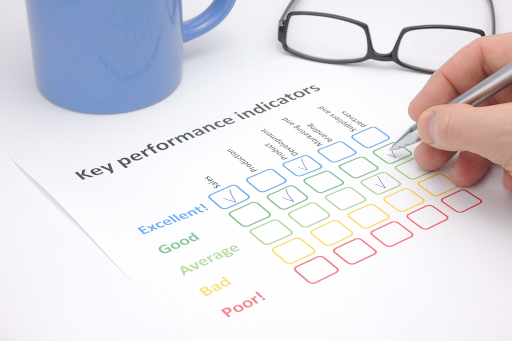What Is Business Intelligence?
Business Intelligence helps analyze business information (Chen et al., 2012). This supports and improves management decision-making (Chaudhuri et al., 2011).
Business Intelligence Components
It involves a combination of techniques and tools. It includes data mining and statistical analysis (Mathrani, 2021).
Business intelligence improves marketing campaigns (Leonidou et al., 2002) and supply chain management (Chahal et al., 2020). By knowing customers (Curtis et al., 2011), businesses can create targeted marketing campaigns (Leonidou et al., 2002).
They can use business intelligence to make better decisions. This includes inventory levels (Deloof, 2003), pricing (Geyskens et al., 2006), and production (Evanschitzky et al., 2012). Business intelligence helps businesses run with efficiency.
Business Intelligence Tools
BI tools specialize in data analysis, query and reports (such as dashboards). They support decision-making (Chen et al., 2012). They enhance the performance of a range of business processes.
They are systems that improve decisions and advantage (Elbashir et al., 2008).
Business Users
Different industries use BI solutions to solve problems (Sharma et al., 2010).
Hospitals (Aggelidis & Chatzoglou, 2012), police departments (Tona et al., 2012), retail companies (Hou, 2012; Davenport, 2006) and banks (Olszak & Ziemba, 2007) are just some examples of BI adopters.


Tracking Your Leads
Do you struggle to track your leads? Well, you’re not alone.
But lead tracking is essential in the lead management process. It involves monitoring lead activity across all marketing channels. It includes pursuing actions to close a sale.
You can pursue the right leads to profitable growth by identifying sources. As well as by choosing the right tracking tools, and leads.
Business Intelligence Factors
Business intelligence is important. It provides insights that help businesses make better decisions. By considering all factors, businesses can identify events and threats. They can make decisions that lead to improved outcomes. When businesses use intelligence, they gain advantage.
Business intelligence has five key factors. They are data analytics, data storage, data management, business processes, and outcome-based objectives.
Data Analytics
In recent years, data analytics has become important (Chen et al., 2012).
By analyzing data, businesses gain insights on customers (Anton et al., 2021). It helps them make better decisions. It improves their efficiency and increases their profits.
But it is not just a tool for businesses. It is a tool for people. By knowing how it works, people can make better decisions. It can help people save money and stay healthy. It can improve their affairs.
Benefits of Data Analytics
Its benefits as a business intelligence factor are many and varied. Some specific benefits of data analytics as a factor include:
Improved decision-making. It helps businesses make better decisions by providing insights. By knowing the data, businesses can make informed decisions. These decisions anchor on evidence rather than guesswork.
Better insight of customers and target markets. It helps businesses better understand their customers and target markets. By knowing data, businesses can develop effective strategies. They can improve their customer service.
Optimized operations. It helps businesses optimize operations by analyzing data. Doing so can streamline operations and improve efficiency.
New events. Predictive analytics helps businesses identify new events for growth. Businesses can develop products and services that meet customer needs.
Data Storage
When building a business, it’s important to consider how you will store data. Data storage is critical. Your data storage has a big impact on your company (Baars & Kemper, 2008).
Ad hoc reporting allows users to generate reports on the fly. It doesn’t rely on predefined data models and data sources. This resilience can help businesses that seek the latest information.
Data warehouse is another software that can support ad hoc reporting. By storing data, users can access their information.
There are many types of data storage. Traditional relational databases to newer NoSQL databases. Each has its own deals and drawbacks. So it’s important to choose the right one for your business.

Data Visualization
Relational Databases. Relational databases are the most common type of database. They’re well-suited for storing data into tables. But they can be more expensive to maintain than other types of databases. They’re not the best choice for storing large data.
NoSQL Databases. NoSQL databases are newer. They provide more resilience than relational databases. They’re used for storing data that doesn’t fit into a traditional database. An example is big data or unstructured data. NoSQL databases can be cheap to maintain. But they can be more difficult to query.
Benefits of Data Storage
By storing raw data, businesses can track their progress over time. They can see how they are performing in various areas.
Data storage helps businesses compare themselves to others in their industry. It allows them to see where they need to improve.
Businesses can use data storage to identify trends and patterns. These can help them make better decisions about their products and services.
Data storage helps businesses protect themselves from legal drawbacks.
They can achieve this by keeping records of actions and decisions.
When choosing a solution, consider your business needs. You must choose the option that will best meet them. If you’re not sure which type is for you, talk to a business intelligence expert. They can help you achieve your best business performance.

Data Management
Data management is critical. It ensures successful business intelligence (Baars & Kempers, 2008).
Data management collects, stores, accesses, and uses data. It includes the technical aspects of managing data. An example is databases and protocols for data collection. It includes the strategic aspects of data in decision-making. Different data management methods explore data in many ways.
A well-managed database is essential for business intelligence. It provides the foundation for other business intelligence activities. Without accurate data, it is impossible to generate decisions.
Key Components of Data Management
Data management has several components:
Data collection. Data collected from a variety of sources for business intelligence. This includes internal sources. Examples are company databases and external sources. External sources can be historical and current data.
Data storage. Storing data in a way that makes it accessible is important. It includes developing data warehouses. It involves data lakes and data preparation plans.
Data access. Data must be easy to access. This includes creating APIs or other forms of data access. They allow business intelligence tools to connect to the data.
Data quality. Data must be of high quality for business intelligence. It includes ensuring that data is accurate, complete, and timely. This is where data visualization comes in. It transforms data.
Data governance. Data should meet the needs of the business. This includes developing policies. It involves procedures for collecting, storing, accessing, and using data.
Business Process
Business process is an important factor. It helps groups identify areas for improvement (Elbashir et al., 2008).
Knowing how it works can make changes to improve efficiency and power. It can help optimize resources and reduce costs. Business intelligence gleaned from this to make better decisions.
Benefits of Business Process
Tracking and monitoring can help identify weak areas.
Business processes generate insights to drive decisions around improvements.
Business intelligence can help identify new events. This is important for growth or areas of potential risk.
Business processes can benchmark performance against industry peers.
Business processes help improve the efficiency and power of a group.
Outcome-Based Objectives
Outcome-based objectives are important for business intelligence. They help businesses track their actions.
By setting goals, businesses can evaluate their success. They use this to make necessary adjustments. Outcome-based objectives help identify areas for improvement.

Key Performance Indicators
Some benefits of using KPIs (Roldan-Garcia et al., 2019) in include:
They help systems identify and track progress towards specific goals.
They benchmark performance against industry peers or historical data.
They help decision-makers prioritize resources and allocate budgets.
They monitor trends and identify potential risks or events.
KPIs are an important factor in business intelligence. They provide a way to measure progress and performance against specific goals.
By tracking KPIs, systems can allocate resources. They can prioritize initiatives. They can make informed decisions about investments.
KPIs can help identify trends and potential risks. It allows businesses to take advantage of emerging markets. It helps them avoid potential pitfalls.
Objectives and Key Results
It provides a clear and concise framework for setting goals. This framework can measure progress (Liu, 2021).
It ensures that everyone is working towards the same objectives.
It motivates employees to achieve results.
It allows managers to track progress. It helps them identify areas for improvement.
It helps businesses make better decisions through data-driven insights.
A clear and concise goal is important. It provides a specific target to aim for. It ensures that everyone is working towards the same objectives.
Having a clear goal motivates employees to achieve results. It allows managers to track progress. It helps them identify areas for improvement. By providing data-driven insights, businesses can make better decisions.
Key Result Areas
Objectives are important in business intelligence. They help direct the team (Ganesha & Aithal, 2020).
By having measurable objectives, it is possible to track progress. It helps determine if the project is successful. Objectives ensure that everyone is working towards the same goal.
There are many benefits to Key Result Areas (KRA). KRAs provide a clear and concise way to measure progress and success.
The Problem
Many business users are operating without a feedback loop. If you were a pilot, you earned an Instrument Rating through intensive training. It focuses on flying in reference to instruments.
It is one of the most valuable ratings in a pilot certificate. Business Intelligence is the business version of this.
Many businesses aren’t even tracking Key Performance Indicators [KPI’s].
Without business intelligence, businesses will struggle to make decisions. Without data to analyze, the business will be flying blind. It is more likely to make mistakes that could be costly.
The company will have a hard time judging customers and predicting trends.
As a result, the business will likely miss out on growth.
So, what are some solutions available for business users?
Here’s How You Can Track Your Leads Without Getting Too Swamped:
DETERMINE AND DEFINE YOUR LEAD SOURCES.
SET UP YOUR SYSTEM AND TRY IT OUT.
INPUT LEADS OR IMPORTING FROM ANOTHER TOOL.
NURTURE YOUR LEADS AND TRACK ACTIVITIES.
FREE "Mystery Gift"?
Let me stay in touch with you via email and as a thank you - get this FREE gift.. Something others paid over $1,000 for. (True story)

It outlines how I helped a client do over $1,000,000.00 in under 8 months.
With a single, automated online marketing strategy.
Still in use today.
*We will never rent, sell or pull any nonsense with your info. You may unsubscribe anytime.
We WILL send you useful + helpful tools, templates, info & cool stuff.
My mission is to help you live a long, happy, healthy, joyful & wealthy life.

